Share
Learn when debt consolidation saves money, how to calculate potential savings, and what red flags to watch before consolidating multiple debts in Australia.
When debt begins to pile up across multiple credit cards, personal loans, and buy now pay later services, it quickly feels overwhelming. Managing different interest rates, due dates, and repayment amounts makes it harder to stay in control of your finances.
For many Australians, debt consolidation offers a way to simplify repayment and potentially save money. Recent data shows that 46% of Australians started 2025 in debt, with applications for debt consolidation loans surging by 170% over the past year. The average consolidation loan sits at $33,000, showing that many people are looking for a way out of their debt spiral.
But is it always the right move? Does consolidating debt genuinely save you money, or could it end up costing more in the long run?
Understanding debt consolidation in Australia
Debt consolidation involves rolling several existing debts into one new loan. Instead of managing five different repayments each month, you’re left with one repayment, one lender, and one interest rate. The goal is to reduce complexity, improve cash flow, and lower your total interest costs.
Most Australians use personal loans to consolidate debt. You take out a new loan large enough to cover all existing debts, use that money to pay them off, and then focus on repaying the single consolidation loan. More than half (51.92%) of all personal loan applications are for debt consolidation purposes.
You can consolidate credit cards, personal loans, buy now pay later accounts, and store cards. Credit card interest rates in Australia currently sit between 18.67% and 20.99% per annum, with some cards charging even higher. Meanwhile, personal loan rates for borrowers with good credit can be as low as 5.76% to 9% per annum. That gap represents a genuine opportunity to save money.
Why Australians turn to debt consolidation
The most common reason people consolidate debt is the mental burden of juggling multiple repayments. When you have three credit cards, two personal loans, and a couple of buy now pay later accounts, keeping track of payment dates becomes exhausting. Miss one payment and you’re hit with late fees, penalty interest rates, and a negative mark on your credit file.
Australia’s total credit card debt currently sits at $41.96 billion, with the average cardholder carrying around $3,454 in debt. Those carrying balances month to month pay an average of $1,664 in interest annually. For households already stretched by cost of living pressures, this creates a cycle that’s hard to break.
Buy now pay later services have added another layer of complexity. The average BNPL user now spends $2,208 annually across these platforms, and financial counsellors report that BNPL debt has overtaken credit cards as the most common form of debt among their clients.
When you consolidate these various debts into a single loan with a fixed repayment schedule, you gain clarity. You know exactly how much you need to pay, when it’s due, and when you’ll be debt-free. This psychological benefit shouldn’t be underestimated.
Lower interest rates mean real savings
Debt consolidation saves money primarily through lower interest rates. If you can secure a personal loan at a significantly lower rate than your current debts, the savings can be substantial.
| Scenario | Interest Rate | Total Interest Paid | Total Repayment | Savings |
|---|---|---|---|---|
| Current credit card debt | 19% p.a. | $3,190 | $13,190 | - |
| Consolidation loan | 9% p.a. | $1,470 | $11,470 | $1,720 |
Even smaller interest rate differences add up. Research shows that the difference between a 20% rate and a 9% rate on $1,655 over 12 months equals more than $100 in interest savings. When you’re dealing with larger balances and longer terms, these numbers compound significantly.
The key is qualification. Lenders offer their best rates to borrowers with good to excellent credit scores. If your credit score is strong and you have stable income, you’re more likely to access competitive rates. The average personal loan borrower in Australia has a credit score of 782, which sits in the very good range.
Fixed repayment terms create a clear end date
Unlike credit cards, which are revolving credit products with no fixed end date, a debt consolidation loan has a defined term. You borrow a set amount, agree to fixed repayments, and know exactly when the loan will be paid off.
This structure forces discipline. Credit cards are endlessly tempting because the available credit replenishes as you make payments. With a personal loan, there’s no temptation to re-spend the money you’ve paid off.
It also improves your budgeting. When you know you need to pay $550 every fortnight for the next four years, you can plan accordingly. This predictability makes it easier to manage household expenses and build savings alongside debt repayment. The average personal loan has a term of 35.4 months, just under three years, which means borrowers can see light at the end of the tunnel.
Simplification reduces missed payments and financial stress
One often overlooked benefit is the reduction in missed payments. When managing multiple debts with different due dates, it’s easy to lose track. Each missed payment typically incurs a late fee of $15 to $35. More damaging is the impact on your credit score, as payment history is one of the most significant factors in credit scoring.
By consolidating to one payment, you eliminate this risk. Most borrowers set up automatic direct debits, ensuring payments go through on time every single time. Over the life of a loan, avoiding just three or four late payment fees could save you $100 or more.
Financial stress is one of the leading causes of anxiety among Australian adults. Simplifying your debt structure can provide genuine psychological relief, making it easier to focus on other aspects of your financial wellbeing.
When extended loan terms cost you more
One of the biggest traps in debt consolidation is extending your loan term too far. Lenders may advertise lower monthly repayments, which sounds attractive when you’re feeling the squeeze. However, those lower repayments often come from stretching the loan over six or seven years.
The longer you take to repay debt, the more interest you pay overall, even if the interest rate is lower. This is where consolidation can backfire financially.
| Loan Term | Monthly Repayment | Total Interest | Total Cost | Extra Cost vs 3 Years |
|---|---|---|---|---|
| 3 years | $645 | $3,230 | $23,230 | - |
| 5 years | $425 | $5,500 | $25,500 | $2,270 |
| 7 years | $330 | $7,720 | $27,720 | $4,490 |
This is why it’s crucial to compare the total cost of the loan, not just the monthly repayment. Many Australians fall into this trap because they focus on immediate cash flow relief rather than long-term cost. If you can afford higher repayments, a shorter loan term will always save you more money.
Fees that eat into your savings
Every loan comes with fees that can significantly reduce or even eliminate your potential savings.
| Fee Type | Typical Range | Impact on $20,000 Loan Over 5 Years |
|---|---|---|
| Establishment fee | $0 - $499 | $0 - $499 (one-time) |
| Monthly account-keeping fee | $0 - $15 | $0 - $900 (total) |
| Early exit fees (existing debts) | $50 - $300 per account | $150 - $900 (for 3 accounts) |
| Potential total fees | Varies | $150 - $2,299 |
The comparison rate is designed to help you understand the true cost by incorporating both interest and most standard fees. If you see a loan advertised at 8% with a comparison rate of 12%, the difference is made up of fees. Always check the comparison rate, not just the advertised interest rate.
Calculate all these costs upfront by adding establishment fees, monthly fees over the loan term, and any exit fees from current debts. Only if the total savings still outweigh these costs is consolidation genuinely worthwhile.
When your interest rate doesn’t improve
Debt consolidation only saves money if you can secure a lower interest rate than you’re currently paying. This isn’t always possible, particularly for borrowers with poor credit histories.
Lenders use risk-based pricing, meaning they charge higher rates to borrowers they perceive as higher risk. Someone with a credit score below 459, categorised as bad credit, might be quoted rates of 25% or higher on a personal loan. If their current debts average 18%, consolidation would actually make things worse.
There’s also the question of secured versus unsecured debt. Credit cards and personal loans are typically unsecured, meaning they’re not backed by an asset. Some lenders offer lower rates on secured loans, where you put up your car or home as collateral. While this might reduce your interest rate, it significantly increases your risk. If you default on unsecured debt, the lender can pursue you legally but can’t automatically take your assets. With a secured loan, they can repossess whatever you’ve used as security.
Converting unsecured debt into secured debt to access a lower rate is rarely advisable unless you’re completely confident in your ability to repay. The potential savings simply aren’t worth the risk of losing your home or vehicle.
If underlying spending habits don’t change
Perhaps the most critical point is this: a debt consolidation loan doesn’t fix overspending. It’s a tool to make existing debt more manageable, but it won’t stop you from accumulating new debt if you haven’t addressed the behaviours that got you there.
Many people consolidate their credit card debts, pay them off through the loan, and then gradually run those cards back up again. Within a year or two, they’re back where they started, except now they have the consolidation loan and new credit card debt on top of it.
Financial counsellors consistently emphasise this point. Consolidation works best when combined with honest budgeting, spending tracking, and a commitment to living within your means. Some people choose to close their credit cards after consolidation to remove the temptation entirely.
If you struggle with impulse spending or regularly overspend your budget, address these issues before or alongside consolidation. Working with a financial counsellor through complimentary services like the National Debt Helpline (1800 007 007) can help develop better money management skills.
How to calculate if consolidation saves you money
Before committing to debt consolidation, run the numbers carefully. Start by listing every debt you want to consolidate. For each one, write down the current balance, interest rate, and monthly repayment. Calculate how much you’re paying in total each month and how much interest you’ll pay over the remaining terms.
Next, gather quotes from several consolidation loan providers. For each quote, note the interest rate, all fees including establishment and monthly charges, the proposed loan term, and the total amount you’ll repay over the life of the loan.
Don’t forget to factor in any exit fees from your current debts. Some lenders charge early termination fees that can run into hundreds of dollars.
Compare the total cost of your current debts against the total cost of the consolidation loan, including all fees. If the consolidation loan costs less overall and you’re comfortable with the monthly repayments, it’s likely a good financial move. Use online debt consolidation calculators to model different scenarios. Many Australian bank websites offer these tools at no cost.
What to look for in consolidation loan offers
| Feature | What to Look For | Why It Matters |
|---|---|---|
| Interest rate | At least 3-5% lower than current average | Ensures genuine savings after fees |
| Ongoing fees | $0 or minimal monthly fees | $10/month = $600 over 5 years |
| Establishment fee | $0 - $200 (lower is better) | Reduces upfront costs |
| Extra repayments | No penalties for additional payments | Pay off faster and save on interest |
| Payment frequency | Weekly/fortnightly options available | Aligns with your pay cycle |
| Interest type | Fixed rate preferred | Protects against rate increases |
| Payout method | Direct payment to creditors | Ensures debts are actually cleared |
Red flags that consolidation might not work
| Red Flag | Why It’s a Problem | What to Do Instead |
|---|---|---|
| Similar or higher interest rate | Won’t save money on interest | Keep current debts or improve credit score first |
| Very long loan term 7+ years for less than $20000 | Dramatically increases total interest | Choose shorter term if possible |
| High fees ($500+ establishment, $15+ monthly) | Erodes interest savings | Compare fee-free lenders |
| Pressure to borrow more than needed | Increases debt burden unnecessarily | Only borrow exact consolidation amount |
| Requires home as security for unsecured debt | Risk losing your home | Stick with unsecured options |
Who benefits most from debt consolidation
| Profile | Why Consolidation Works Well | Potential Savings |
|---|---|---|
| Multiple high-interest credit cards (19%+) | Large interest rate gap to personal loans (8-10%) | $1,500+ on $15,000 over 3 years |
| Good to excellent credit score (750+) | Access to most competitive rates | Maximum interest savings |
| Multiple payment dates causing missed payments | Simplification prevents late fees and credit damage | $100+ annually in late fees |
| Committed to stopping new debt accumulation | Prevents re-accumulation after consolidation | Achieves actual debt freedom |
| Young adults (18-29) with BNPL debt | Can consolidate multiple BNPL accounts | Regains financial control |
Other strategies for managing multiple debts
| Strategy | How It Works | Best For | Pros | Cons |
|---|---|---|---|---|
| Balance transfer | Move credit card debt to 0% promotional card | Credit card debt only, if can pay off in 6-24 months | Interest-free period can save most money | High revert rate if not paid off in time |
| Debt avalanche | Pay minimums on all debts, extra on highest interest rate | Mathematically optimal savings | Saves most on interest | Requires discipline and time |
| Debt snowball | Pay minimums on all debts, extra on smallest balance | Those needing motivation | Quick wins maintain momentum | Not mathematically optimal |
| Negotiate with lenders | Request hardship programs or rate reductions | Those in financial difficulty | No cost to explore, no new loan | Not all lenders offer programs |
| Financial counselling | Professional guidance and negotiation at no cost | Anyone struggling with debt | Objective advice, can negotiate on your behalf | Doesn’t eliminate debt itself |
When professional advice is needed
Sometimes debt goes beyond what consolidation can solve. If you’re in genuine financial hardship and can’t afford minimum repayments even after consolidation, speak to a financial counsellor immediately. They can explore options like debt agreements, which are formal arrangements with creditors based on what you can reasonably afford.
Working with a mortgage broker can help if you’re evaluating various consolidation options. Brokers have access to multiple lenders and can find options that suit your specific circumstances. They understand lending criteria and can guide you toward lenders more likely to approve your application at competitive rates.
If you’re facing legal action from creditors, contact Legal Aid or a community legal centre immediately. Complimentary legal advice services operate in every Australian state and territory.
Watch for signs that your debt has become unmanageable: using credit to pay for basics like groceries, borrowing from one creditor to pay another, hiding debt from your partner, or experiencing severe anxiety about your financial situation. These signs indicate you need support beyond a consolidation loan.
The Australian government’s MoneySmart website provides resources at no cost for understanding debt, budgeting, and finding help. It’s a trustworthy starting point for anyone feeling overwhelmed.
Making the right decision for your situation
Debt consolidation can genuinely save money, but only when the circumstances are right. The key factors that determine success are securing a significantly lower interest rate than your current debts, avoiding excessive fees, choosing an appropriate loan term, and maintaining discipline to avoid accumulating new debt.
Before consolidating, calculate your current total debt costs including all interest and fees. Compare this against quotes from several consolidation loan providers, making sure to include establishment fees, monthly fees, and any exit fees from existing debts. Only consolidate if the total cost is genuinely lower and the monthly repayments are sustainable.
Think about both your immediate cash flow needs and long-term financial goals. While a longer loan term might ease monthly pressure, it costs more over time. If you can afford higher repayments, choose a shorter term and save thousands in interest.
Address the underlying reasons you accumulated debt. Create a realistic budget, track your spending, and identify areas where you can reduce expenses. Consolidation is a tool, not a cure. Without changing your financial behaviours, you risk ending up in an even worse position.
If you’re unsure whether debt consolidation is right for you, speaking with a qualified broker can provide clarity. At Attain Loans, our brokers can help you evaluate your options, compare lenders, and determine whether consolidation genuinely saves you money based on your specific circumstances. We’ll work through the numbers with you and ensure you understand exactly what you’re committing to before making a decision.
Further questions
Will consolidating my debts hurt my credit score
How much can I actually save by consolidating my credit card debt
What is the difference between a debt consolidation loan and a balance transfer
Can I consolidate my debt if I have a bad credit score
What happens to my credit cards after I consolidate the debt
This is general information only and is subject to change at any given time. Your complete financial situation will need to be assessed before acceptance of any proposal or product.





